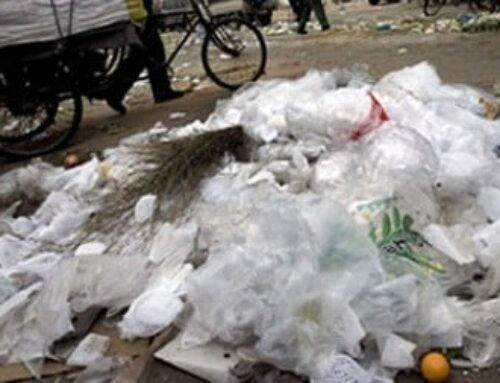Theresa Rodriguez-Moodie and Diana McCaulay | What does right to enjoy a healthy environme
June 14, 2025
In 2011, Jamaica passed the Charter of Fundamental Rights and Freedoms (Constitutional Amendment) Act which includes a significant provision: “The right to enjoy a healthy and productive environment free from the threat of injury or damage from environmental abuse and degradation of the ecological heritage.” Two major legal cases are now asking the court to interpret this language.
In one, six residents of St Ann have brought a constitutional claim against the Government’s approval of a quarrying project by Bengal Development Limited in the ecologically sensitive Dry Harbour Mountains. This case is currently under way. In another, set to be heard starting June 23, 2025, the claimants argue that mining activities under Special Mining Lease (SML) 173 in a section of Cockpit Country is likely to breach their constitutional right to enjoy a healthy environment as well as their right to reside in any part of Jamaica.
These cases raise pressing questions: What does it mean to have environmental rights in a country where forests, rivers, reefs and coastlines are increasingly under threat – not only from local development but from the global climate crisis? How should a constitutional right to enjoy a healthy environment be defined, protected, and enforced? How should that right be weighed against economic priorities or property rights? How do we describe and characterise Jamaica’s ecological heritage?
SYSTEM STACKED AGAINST NATURE
Jamaica is already on the frontlines of climate change. Higher temperatures, more intense hurricanes, prolonged droughts, variable rainfall and eroding coastlines are not future threats – they are unfolding now. In a country where natural ecosystems serve as our first line of defence, from flood protection to food security, environmental protection should be a national priority.
Yet our development decisions often suggest otherwise. Projects are approved in areas flagged by scientists and technical agencies as vulnerable or ecologically valuable. Conditions are imposed – sometimes dozens of them, as in the Bengal case where the environmental permit carried 76 conditions intended to reduce harm – but those conditions, however comprehensive on paper, do not guarantee protection in practice. Permit conditions are sometimes poorly designed as seen in SML 173, where the environmental conditions in that permit reflected a lack of understanding of cockpit karst. Even when conditions are sound, enforcement is weak, inspections are inconsistent, and agencies often lack the staff, funding, or autonomy to act decisively.
The legal framework also contributes to the problem. Jamaica’s primary environmental law, the Natural Resources Conservation Authority (NRCA) Act, grants significant discretion to regulators. But courts in other Commonwealth countries have affirmed that such discretion must be exercised in line with the law’s purpose – which in the case of the NRCA is “to ensure the conservation, protection and proper use of its natural resources.” Despite this, enforcement remains uneven which is likely related to NEPA’s Draft Compliance Manual which lacks overarching principles or policies to guide enforcement officers in developing compliance strategies and determining enforcement actions.
Access to environmental information is limited, which makes it difficult for the public to participate meaningfully in decisions that affect them. When public consultations do happen, they are often perfunctory. Communities most directly impacted by environmental abuse or degradation frequently lack legal support and face significant hurdles to mounting a challenge including the collection of evidence which is needed. While the courts may eventually offer a remedy, litigation is often slow, expensive, and out of reach for many.
RIGHT TO ENJOY A HEALTHY ENVIRONMENT
At its core, the right to enjoy a healthy environment means that everyone should be able to live in an environment which supports their health, safety, and well-being. The air we breathe, the water we drink, the food we eat, and the ecosystems we depend on should all be clean, safe, and sustainable. While there is no single, universally accepted definition, the United Nation’s Office of the High Commissioner for Human Rights (OHCHR) describes the right to a healthy environment as having two main parts:
• Substantive elements: These include clean air, a stable climate, access to safe water and sanitation, healthy and sustainably produced food, non-toxic environments to live, work, and learn in, and healthy biodiversity and ecosystems.
• Procedural elements: These are about people being able to access information, the right to participate in environmental decision-making, and seek justice when harm occurs – without fear of retaliation.
How the courts interpret this right is not merely about whether a project gets approved, but about how Jamaica defines and defends one of the most vital rights in the Charter.
ENVIRONMENTAL ABUSE
The constitutional language also refers to “the threat of environmental abuse and degradation of the ecological heritage” – terms that suggest deeper, systemic damage.
• Environmental abuse refers to activities, often termed crimes, that harm the environment including pollution, deforestation, overfishing, destruction of coral reefs, improper land use and others.
• Degradation refers to deterioration in environmental quality and can result from both human activities and natural events that diminish the environment’s ability to support human and non-human life due to loss of ecosystem functions. An Inter-American Commission on Human Rights (IACHR) advisory opinion (2017) states that ‘Environmental degradation may cause irreparable harm to human beings; thus, a healthy environment is a fundamental right for the existence of humankind’.
• Ecological heritage broadly speaks to all of the planet’s ecosystems, species, genetic resources, and the ecological processes that sustain them. It includes both biodiversity and the traditional knowledge and practices developed by communities who live in harmony with nature. It also encompasses the intergenerational responsibility to protect and restore ecosystems, ensuring that future generations inherit a healthy and functioning natural environment.
Can communities, therefore, invoke this clause in Jamaica’s Charter of Rights and Freedoms to protect local forests, watersheds, or coastlines they have used and occupied for generations? Does this right mean some places must not be subject to widespread land clearing or any of the extractive industries? What happens when environmental degradation begins to affect the health and livelihoods of the people who live nearby? What is the remedy for abuse of the ecological heritage? Who gets compensated? Everybody? Only those who live within a certain distance? And does ecological heritage ‘belong’ only to those who are nearby? These are some of the questions that the legal cases concerning the Dry Harbour Mountains and a section of Cockpit Country may begin to answer.
Theresa Rodriguez-Moodie is an environmental scientist and chief executive officer of the Jamaica Environment Trust. Diana McCaulay is the founder of the Jamaica Environment Trust. Send feedback to columns@gleanerjm.com.
Search
RECENT PRESS RELEASES
Related Post



